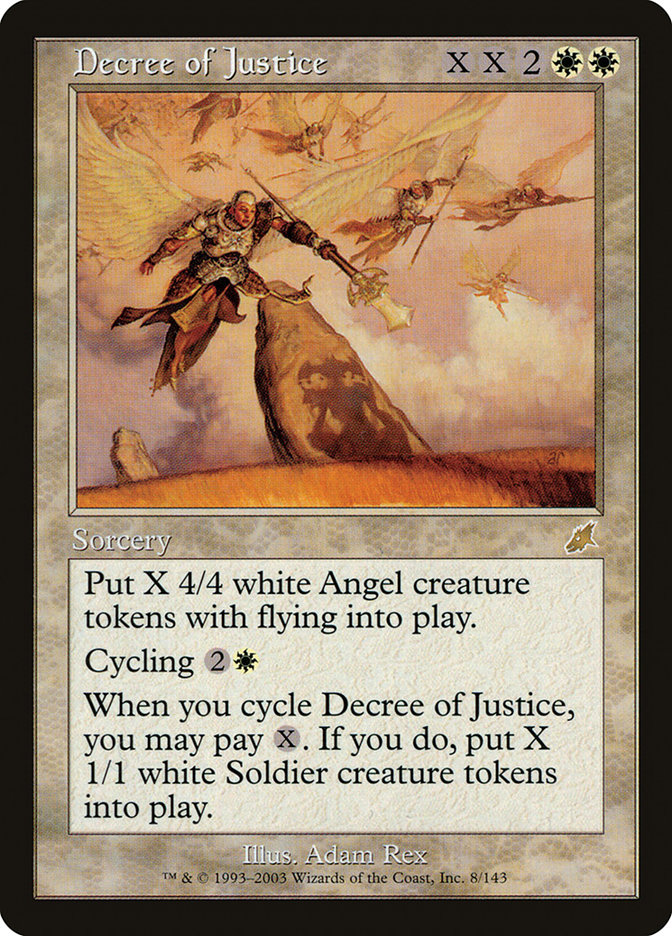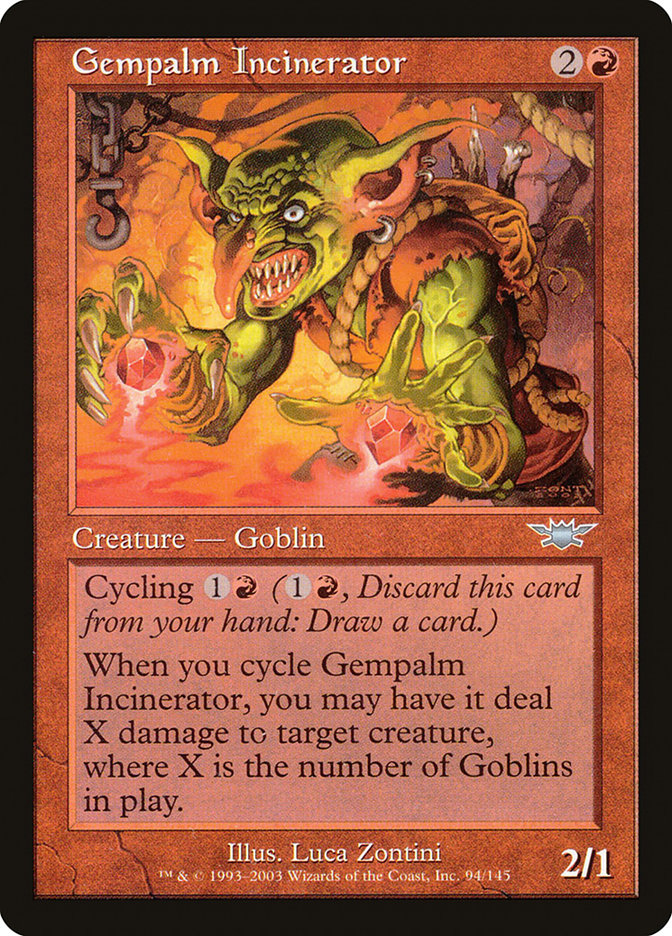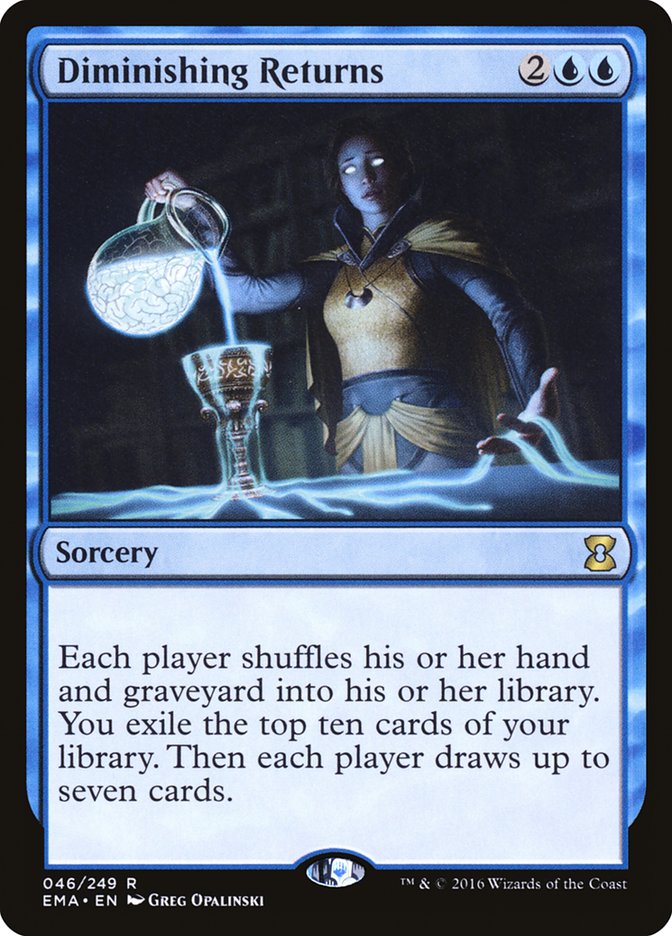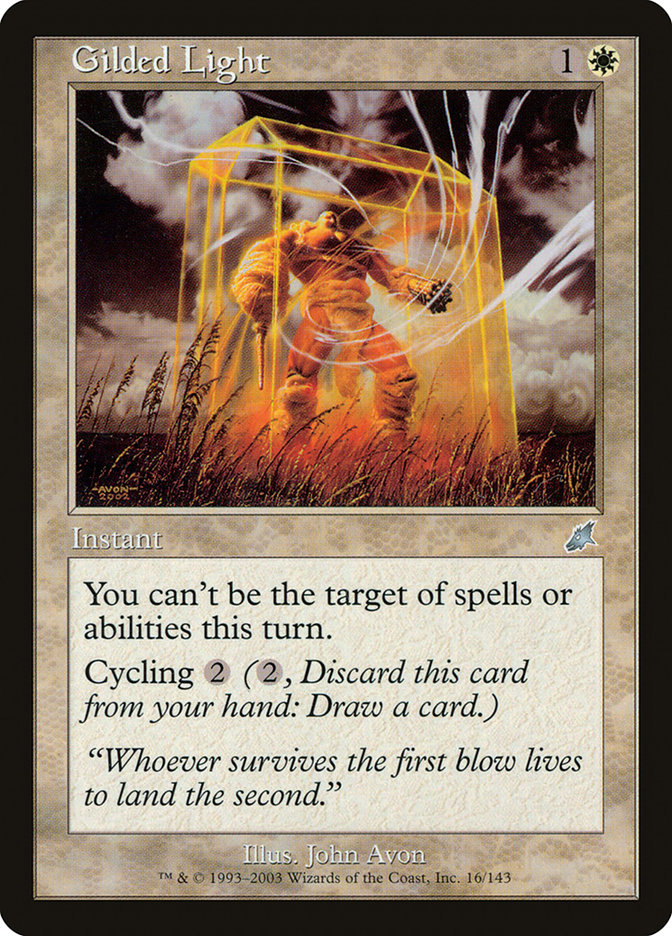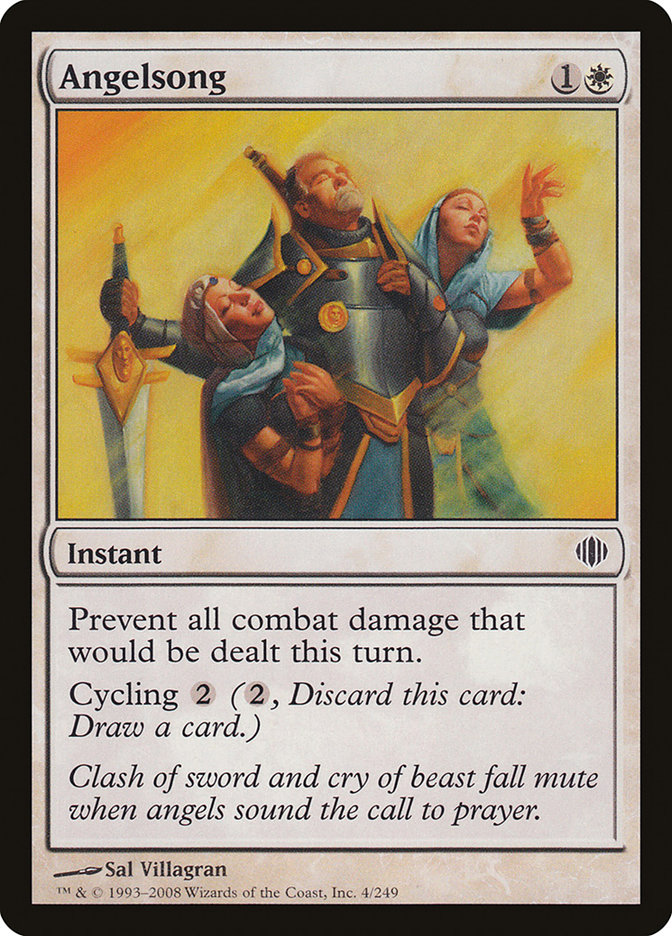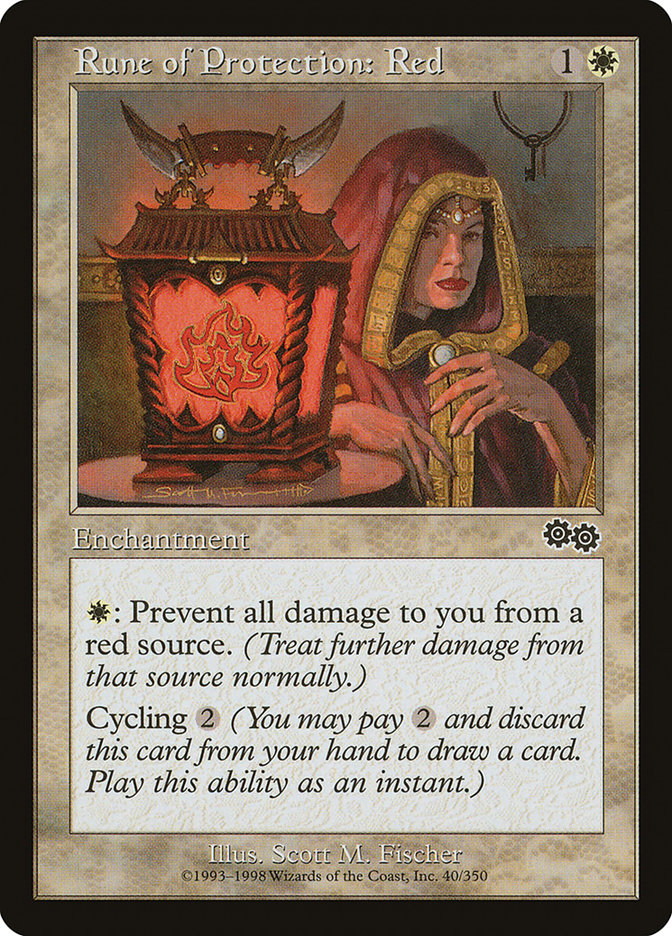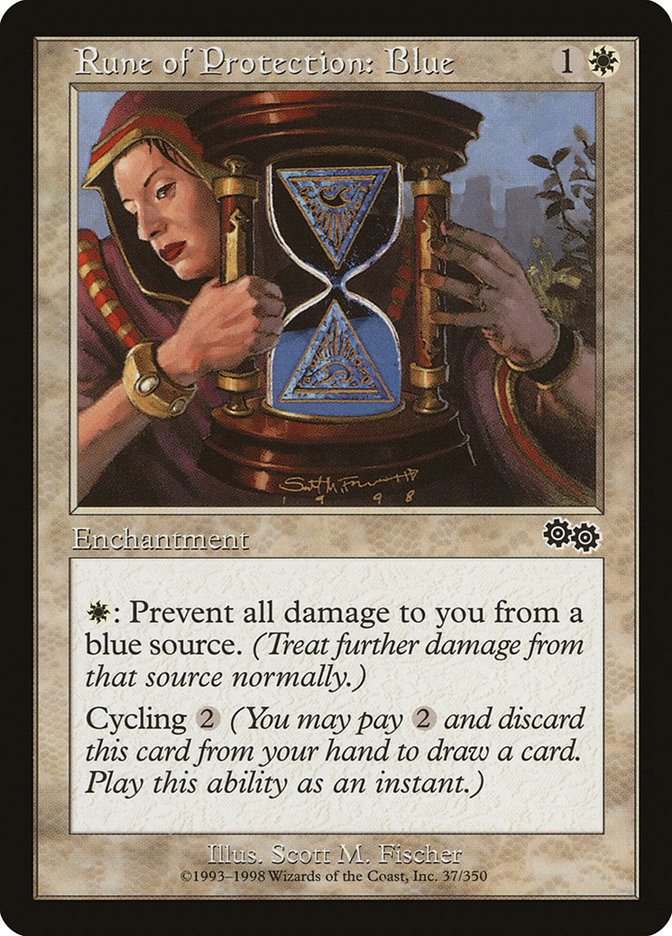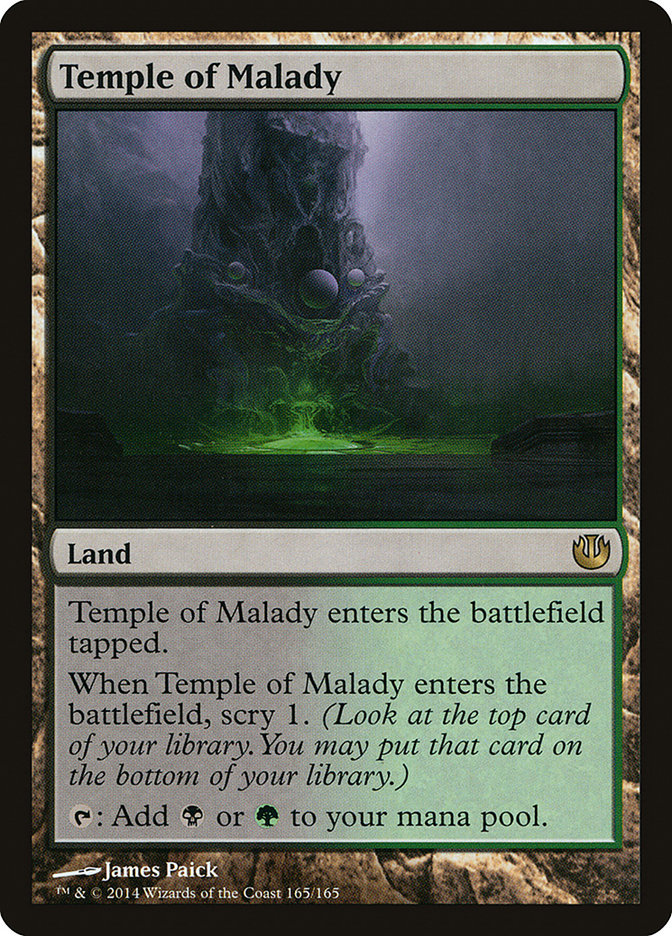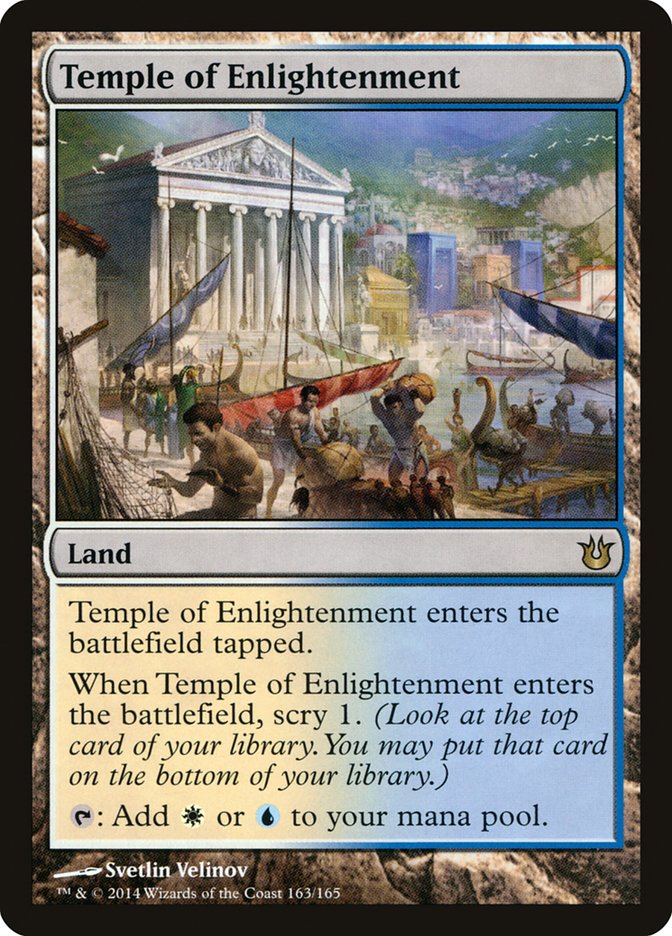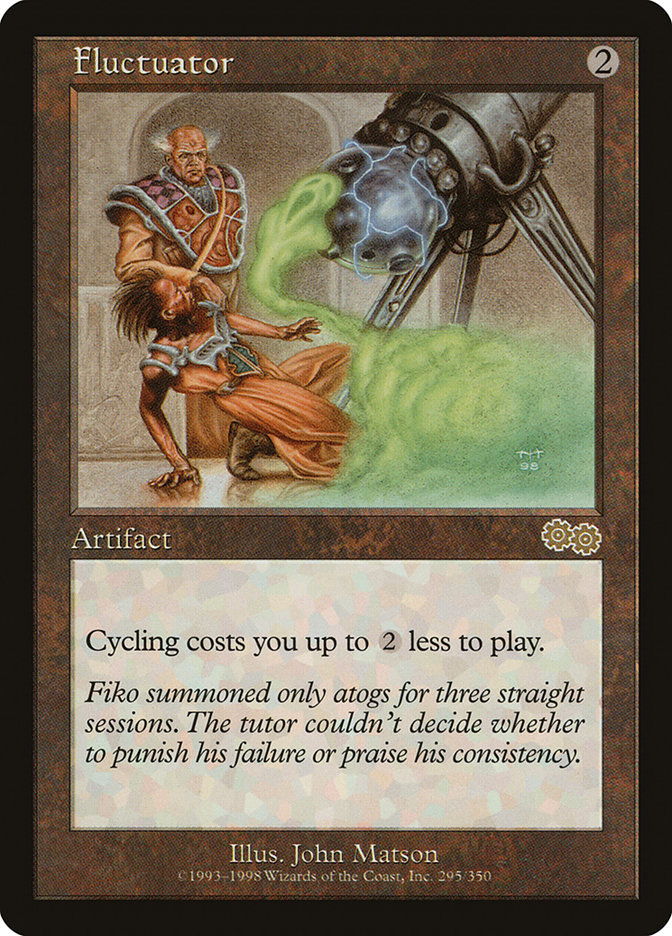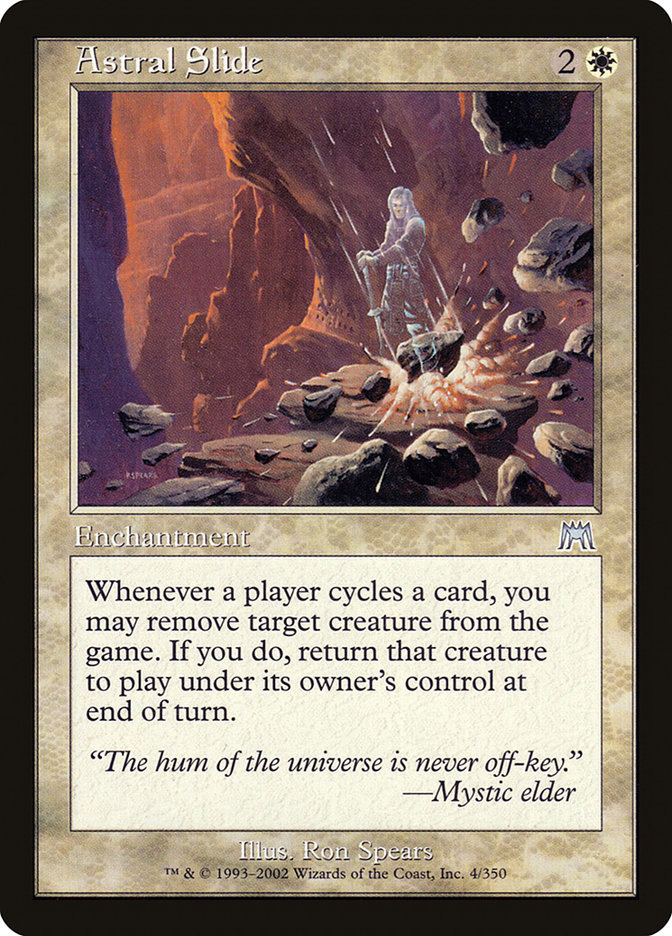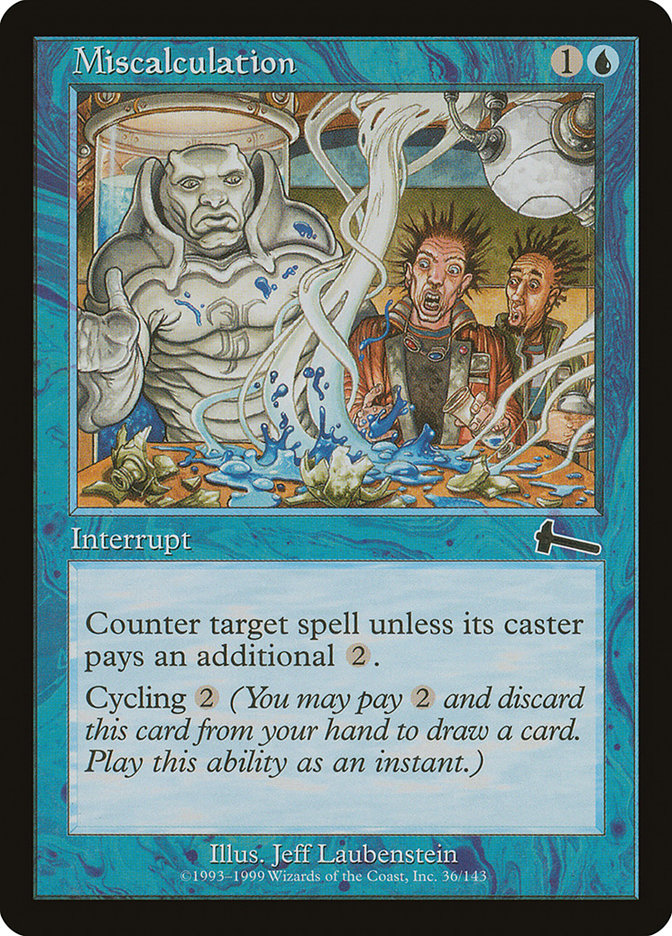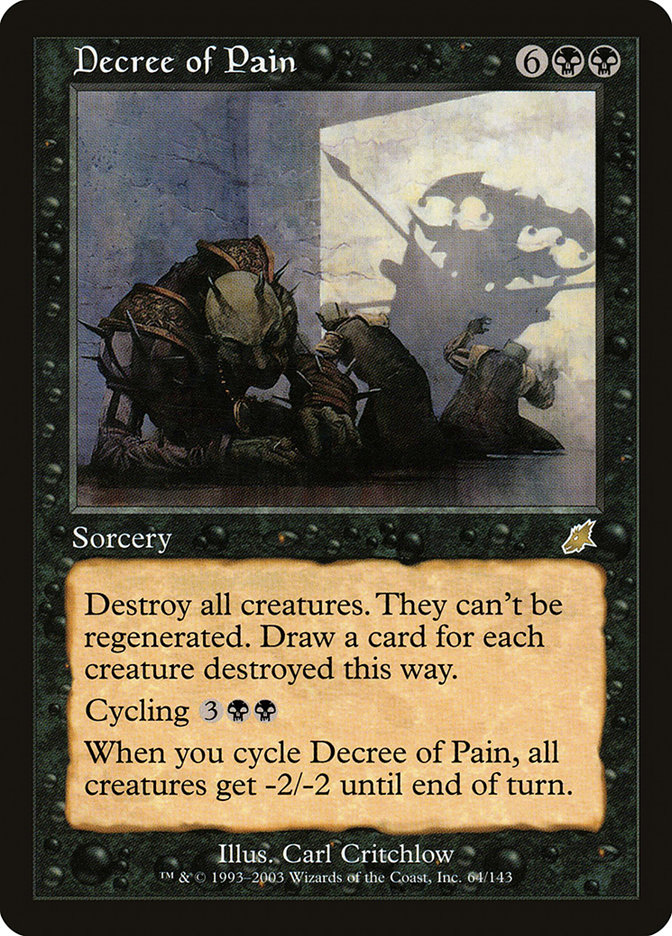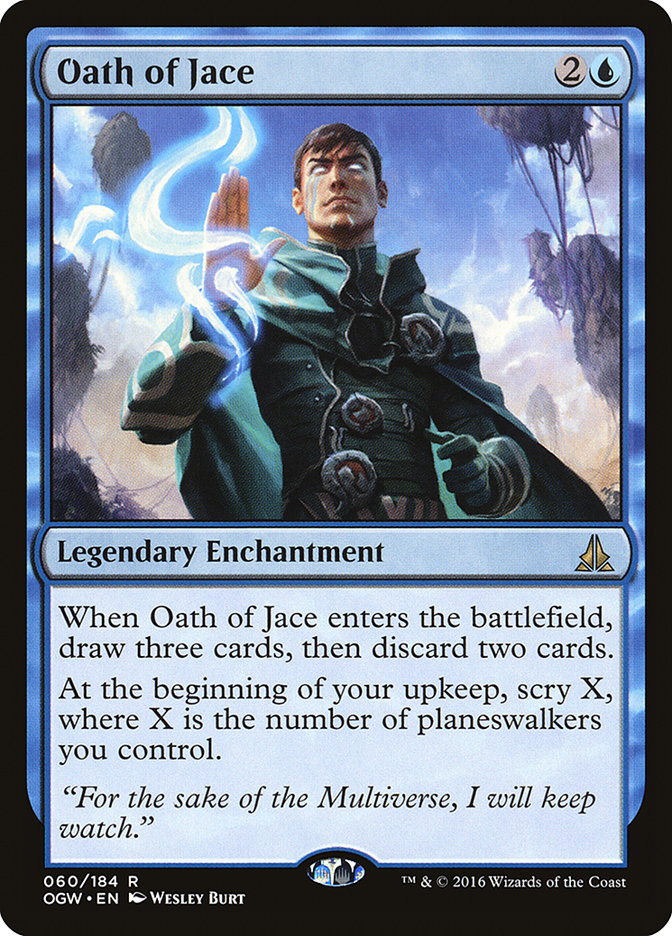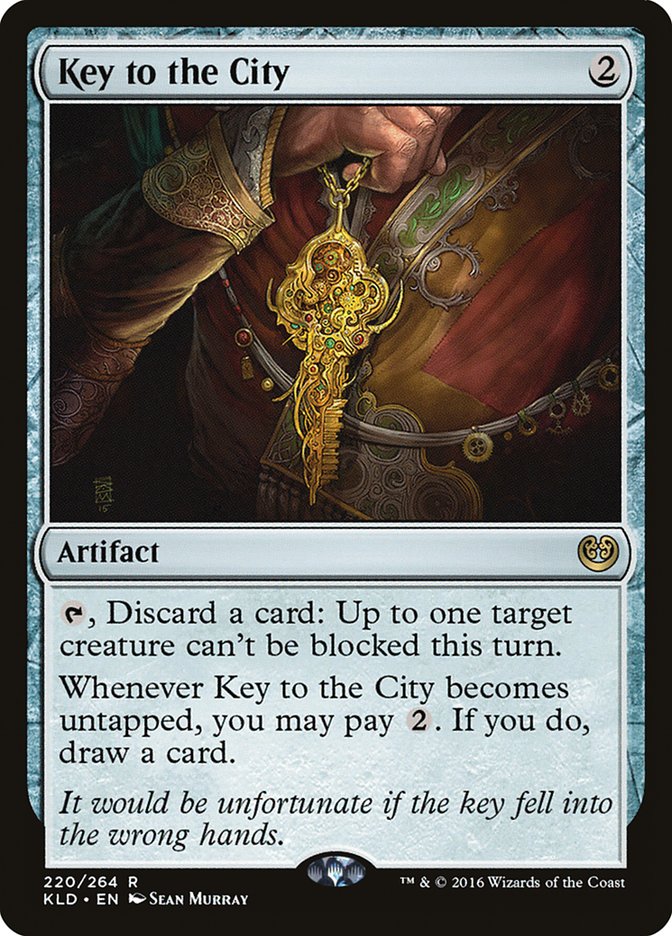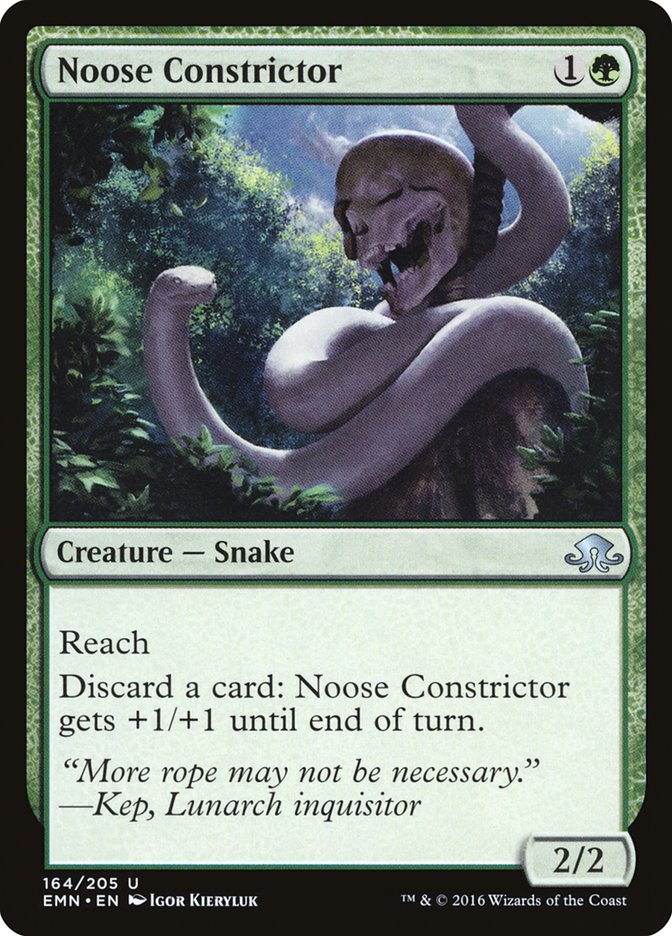It’s been a while since one of the most well-known mechanics in Magic’s history was in Standard, and I bet many, if not most, of you reading this today weren’t around for any of those times, but for me this was the most exciting reveal from the first day of preview season for Amonkhet.
Cycling made its first return during Onslaught block, which was the first block I was around for in its entirety as a competitive Magic player. Decree of Justice and Gempalm Incinerator thus carry some extra nostalgic weight, but that’s not the only reason I’m looking forward the next iteration of the mechanic. Cycling is also one of my favorite mechanics of all time, a feeling that is shared by many of my peers in the Magic community.
Having options is great and cycling is the ultimate option. If the card is going to be good, you keep it, and if not, you trade it in for whatever is on top of your deck–and that could be anything. It could even be a boat!
So today I’m going to go over exactly what makes cycling so valuable and what effect it could have on Standard. Then, because it’s preview season, I’m going to analyze the card that unveiled the return of cycling: Archfiend of Ifnir.
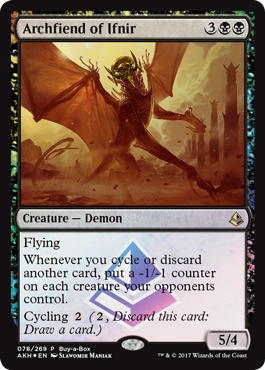
Let’s Talk Diminishing Returns
You get to play anywhere from one to four copies of a card in your deck. And we all have a sense for what kind of cards are going to be better as four-ofs and what cards make more sense as singletons. The distinction between these kinds of cards lies in diminishing returns. Generally speaking, the first copy drawn of a card is better than the second, which is better than the third, and so on. It’s true even of great cards like Winding Constrictor and Gideon, Ally of Zendikar.
Every card needs some support, and the more duplicate copies of a card you draw, the less support you’ll have for it. That third copy of Gideon could’ve been the three-drop you missed playing to defend them, and that second Winding Constrictor could’ve been the Walking Ballista you needed to leverage its ability effectively.
Narrower effects have even higher diminishing returns, including cards such as conditional removal spells or expensive, splashy sorceries that can clog your hand in the early-game. These cards are great when you find an opportunity to cast them, but in a certain percentage of games, they will do absolutely nothing, so you can’t risk playing a lot of copies and having multiple dead cards.
Cycling changes that calculus completely by giving a card a guaranteed floor. If it’s not going to do anything, you can cycle it away and turn it into something else.
Look at cards like Gilded Light, Angelsong, and Wipe Clean. All of these effects can be excellent in the right situation but are often quite poor. Without cycling, you’d probably pass them up for something that is more consistently effective, but if you give them a floor of “Cycling 2” alongside their high ceilings, then you have a card that is much more attractive, and you can reasonably play multiple copies without worrying about having dead cards.
Of course, even cycling cards have diminishing returns. You can’t spend two or more mana every turn on an effect that doesn’t affect the battlefield, but these kinds of narrow effects are generally meant to exploit a specific matchup or metagame, so you can pick and choose which ones you want for a given weekend and gain a significant edge.
In particular, I’m keeping my eye out for an artifact removal spell that has cycling. Being able to play a maindeck answer to Heart of Kiran, other Vehicles, Walking Ballista, Dynavolt Tower, and Torrential Gearhulk would be a huge boon, but currently you can’t do so without sacrificing too much against Four-Color Saheeli. Given that sets often contain some answers to the themes of the previous block, I think the likelihood that we get such a card is fairly high.
Feel free to come back and harass me when I’m wrong. I don’t mind a little egg on my face. Eggs are delicious.
A More Recent Comparison
Many of you may be too new to Magic to remember cycling in Standard, but I’m sure most of you remember Temples from Theros block. Years of every deck having access to several free scrys a game had a huge effect on how Standard operated during those years, and those who understood that best had a huge advantage.
The lands entering the battlefield tapped made it feel as though you were paying a mana for the scry, and to me that closely approximates cycling. It’s a card-neutral increase in a deck’s velocity at a small mana cost. So what were the effects of Temples?
First, there was a general increase in land counts. You were likely to find your key cards anyway, so it was important to not fall too far behind while you dig for them. Cycling is even more mana-intensive than Temples, so I expect the increase to be even more noticeable. Moreover, you can mitigate flood more easily by incorporating expensive cards that have cycling so the risk of playing extra lands is more manageable.
Second, curves in decks started to morph around Temples. Decks were expecting their first land drop to enter the battlefield tapped, so one-drops were less reliable. With enough Temples, you would expect your second land to enter tapped as well, leading to a curve where you’re playing off by a turn, or you could try to play more twos so you could reliably play a second tapped land on turn 3 and still use all your mana. There were other paths, but the important part was that you had to really think about how your deck wanted to sequence in the early turns and build toward that, as opposed to relying on a classic 1-2-3-4 curve.
I see cycling having a similar impact, but by decreasing the efficacy of two-drops and strengthening ones. You’re going to want to cycle on turns 2 and 3, especially if your draw is land-light, and that means you’ll also want to do something on turn 1 or have a one-mana spell with your cycler on turn 3. Things like Fatal Push, Shock, and Galvanic Bombardment that are interactive are especially important to not fall behind, but even things like Attune with Aether, Oath of Nissa, and Traverse the Ulvenwald can let you advance your gameplan efficiently when paired with cycling.
Now, this assumes that cycling will mostly cost two mana as it did initially in Urza block. Should the numbers prove to be more variable in Amonkhet, then you’ll have to change this evaluation accordingly, but that exercise is straightforward once you know the numbers involved. The key here is understanding that cycling is going to have to fit into your curve and as a result will naturally push out whatever else is there currently to an extent.
The reward when executed properly is a deck with much increased consistency, which is a huge advantage, because with cycling you don’t have to sacrifice much in power to realize those gains. I typically evaluate decks on a two-dimensional spectrum of those two metrics to get an idea of their strength, and typically they are at odds. Easing that tension is what makes cycling so fundamentally powerful.

You’ve eaten all your theory vegetables, so now it’s time for some sweet, sweet preview dessert. The first cycling card from Amonkhet is a nice one. The stats are already there as a giant flier, and on top of that we get a very powerful ability.
The first thing that jumps out at me: the fact that Archfiend of Ifnir has cycling means it’s great in multiples. If you have another means of discarding cards, you can cast both and double up on its ability, and if you don’t, you can cycle the extra copies to start killing your opponent’s creatures. You can and will play four copies of this card in the decks that want it without much hesitation.
And that’s important for a creature that can be a liability against things like Grasp of Darkness and Harnessed Lightning. Losing your five-mana creature to a two-mana removal spell is a huge tempo loss, so having the ability to either wait until you can get some immediate value or cycle the card away if the risk is too great really helps to mitigate those worst-case scenarios.
Once I see that we have a card that is powered for Constructed play, I have to look at how it interacts with the current Standard, and I have to say it looks promising. There are plenty of ways to discard cards in Standard to power its ability, even outside of extra cycling. Key to the City; Noose Constrictor; Sinister Concoction; Oath of Jace; Nahiri, the Harbinger; Geier Reach Sanitarium; and Advanced Stitchwing can all do the job. Many of those options let you get value from your five-drop immediately, which is important.
The ability also lets you shoehorn in extra interaction for the Saheeli Rai / Felidar Guardian combo. After they make a pile of Cats, you can cycle or discard a card to shrink them all in combat, after which your giant flying creature should be able to clear Saheeli Rai out of the way. It’s not going to be a completely reliable way of stopping the combo, but as a bonus effect, it’s certainly significant.
Finally, I’d be remiss if I didn’t mention its interaction with Winding Constrictor. Two -1/-1 counters per activation, please.
I’ve never been happier to see that Winding Constrictor is a 2/3 so it won’t die from the first activation and spare your opponent from their misery, although they may sacrifice another counter from their Walking Ballista to stop the bleeding. Either way, that is some delicious comeuppance…and sure to come with just the right amount of salt.
The biggest downside I can see is its vulnerability to some removal. I mentioned Harnessed Lightning and Grasp of Darkness, but Chandra, Torch of Defiance is another well-sized removal spell for the Demon. Of course, those cards haven’t stopped Archangel Avacyn from seeing significant play as a big flier with a built-in sweeper effect. Archfiend of Ifnir may not be on her level, but it’s certainly powerful enough for Standard.
Notably, it can attack into Avacyn with abandon so long as you have the capability of triggering its ability once to get out of range. In a planeswalker-heavy Standard format, maintaining dominance over the skies is particularly important, so that matchup could prove critical to the Demon’s chances for success.
As more of the set is previewed, I’m certain to brew some decks with Archfiend of Ifnir, but for now I’m content looking forward to what’s coming next. The carpal tunnel from frantically refreshing my browser every morning is totally worth it.


